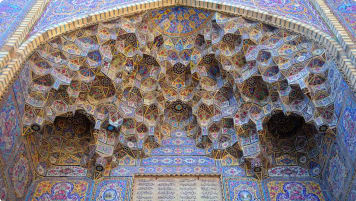Brunelleschi's Dome: The Amateur Competition Winner turned Renaissance Genius
Filippo Brunelleschi. We will look at who he was and how he came to win the competition to design the dome for Florence's cathedral.
28 Nov 19 · 11 mins read
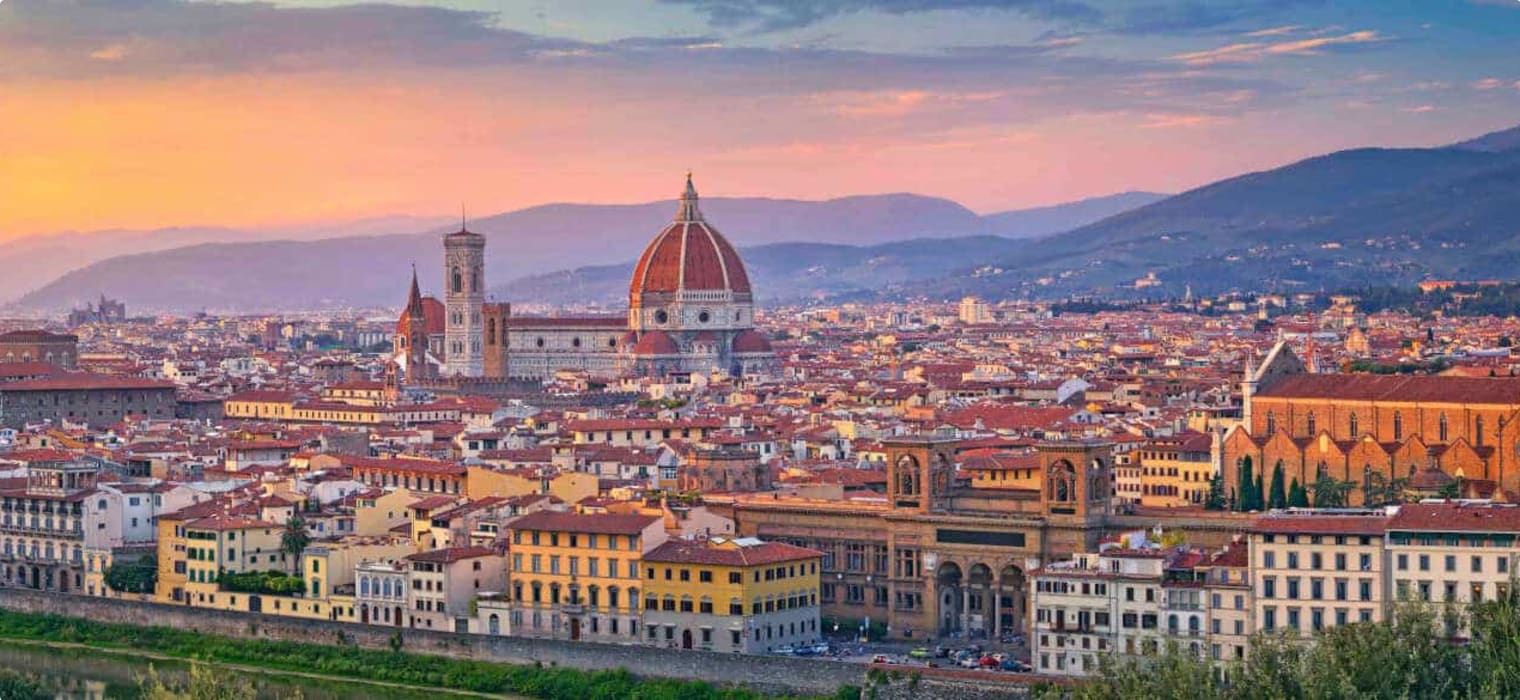
Brunelleschi’s Dome
On 19 August, 1418, the town fathers of Florence announced a competition that would seek to solve a problem that had been plaguing the city for many years. In the roof of the city’s cathedral there was a gaping and increasingly unignorable hole. As the seasons changed, rain streamed through the hole over the area where the high altar should have been.
The competition outline explained:
Whoever desires to make any model or design for the vaulting of the main Dome of the Cathedral under construction by the Opera del Duomo—for armature, scaffold or other thing, or any lifting device pertaining to the construction and perfection of said cupola or vault—shall do so before the end of the month of September. If the model be used he shall be entitled to a payment of 200 gold Florins.
Entrants had just six weeks to complete a proposal and build their models but 200 gold florins was an incredibly attractive prospect, especially for skilled craftsmen. As well as this, the construction of the dome would be the grandest and most ambitious building project the city had ever seen and the man responsible was destined to become famous throughout the lands.
In this article, we will discover more about Florence’s illustrious competition and the man who would eventually win it: Filippo Brunelleschi. We will look at who he was and how he came to win the competition. The article is intended as a backgrounder for our Italy small group tours, particularly those that focus on Florence and its fascinating Renaissance history.
The Renaissance Florence tour allows you to discover the heritage and culture of Tuscany‘s capital and to see many amazing historic sites such medieval basilicas, archaeological ruins and impressive museums. As well as this, the tour gives you the opportunity to discover Renaissance art and gain a greater appreciation for the beautiful scenery of Tuscany.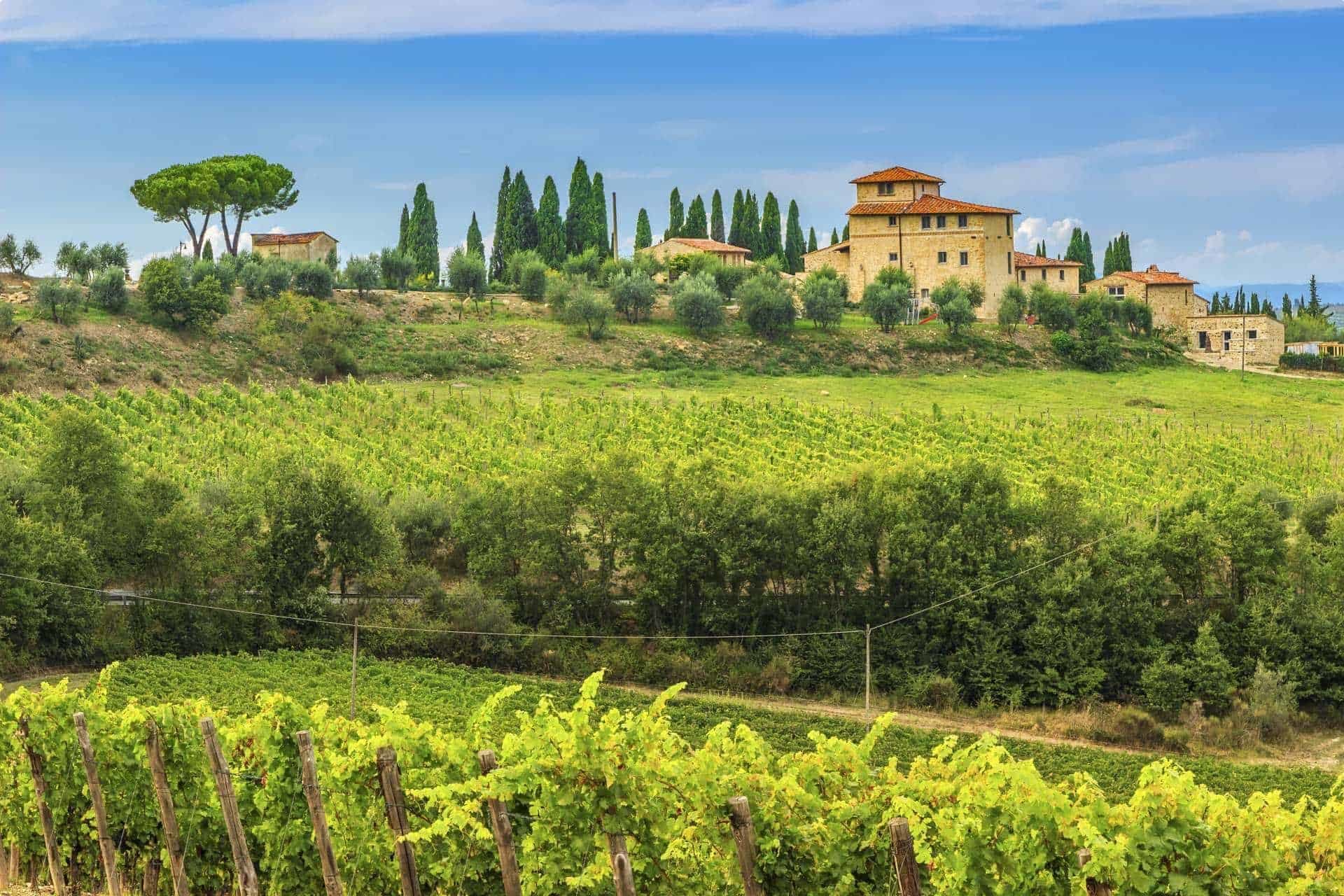
You can read more about the history of Florence here and discover ten hidden gems to visit in the city here. If you would like to read further about Italy, including stories of famous artists, Renaissance figures, espionage, Sicily and more, click here.
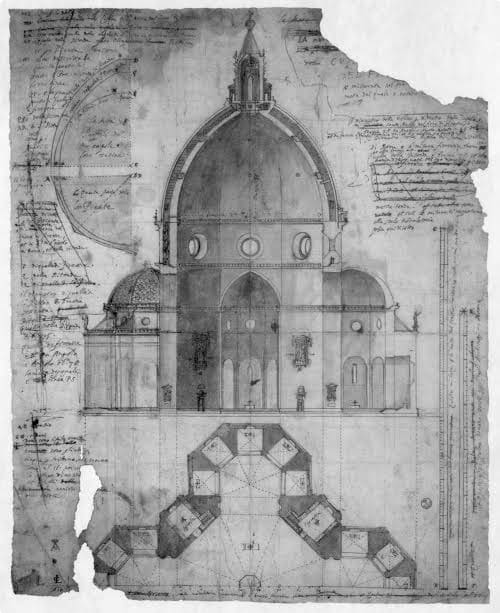
The Architectural Puzzle of Santa Maria del Fiore
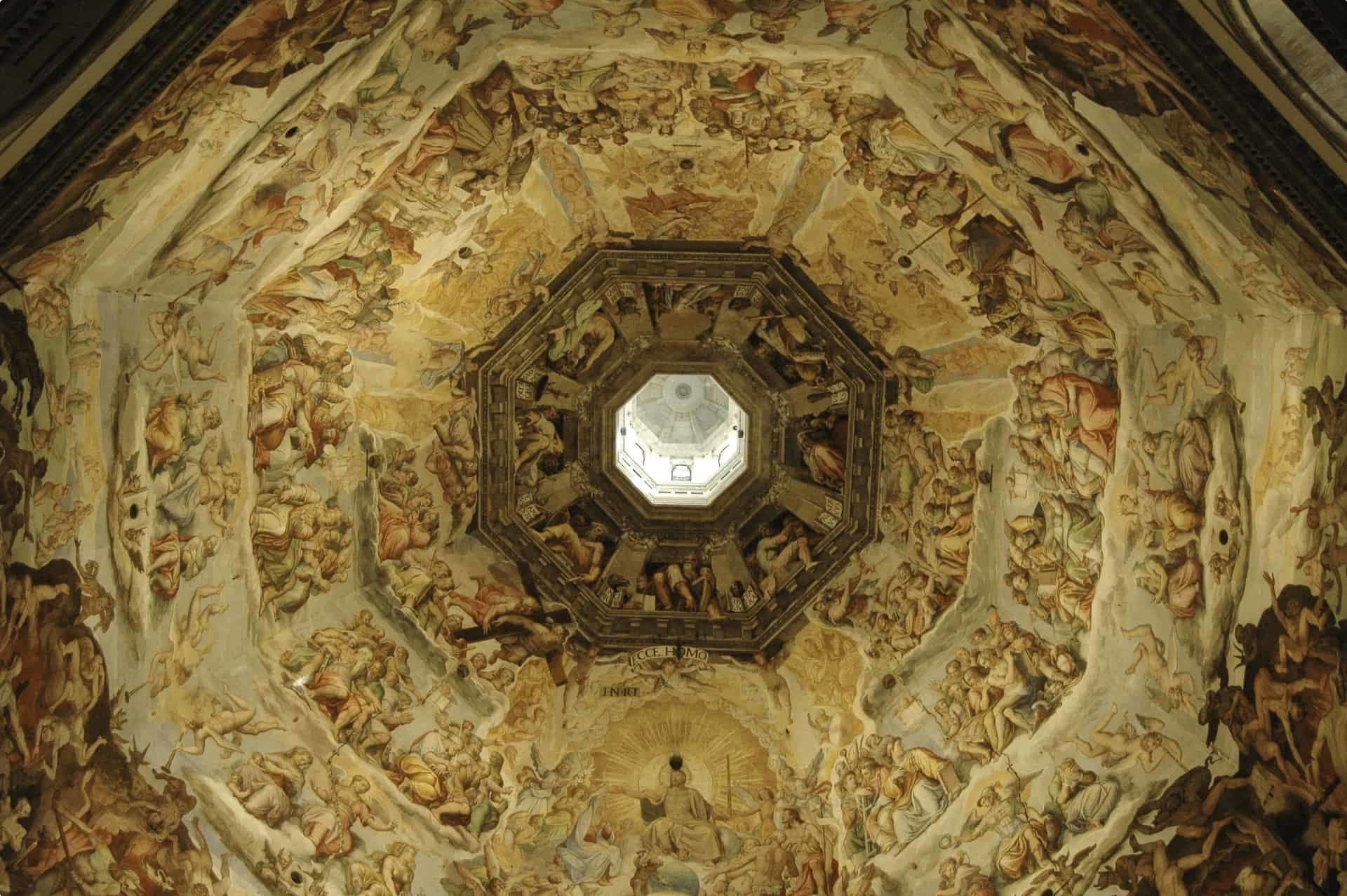
In 1293, over a century earlier, a committee conceived of the idea to build a grand cathedral that included a domed rooftop. Although no technology existed at the time, before the Renaissance period, to build such a dome, the plans for the cathedral went ahead and construction of the Santa Maria del Fiore began in 1296. It was hoped that the new cathedral would reflect Florence’s importance as an increasingly prosperous and powerful city. With a population as big as London‘s, Florence had become wealthy with the arrival of Umiliati monks to the city in 1239, who brought with them the wool industry. With the prosperity that accompanied this burgeoning industry, Florence became the site of many new building projects.
The original designer of the cathedral was Arnolfo di Cambio, an accomplished sculptor and architect recognised for his work on the Palazzo Vecchio and Florence’s fortifications. In documents from 1300, he was described as ‘the most famous and able church builder in the land’. Although di Cambio died in 1302, many of the famous structural and decorative elements of the cathedral are attributed to him.
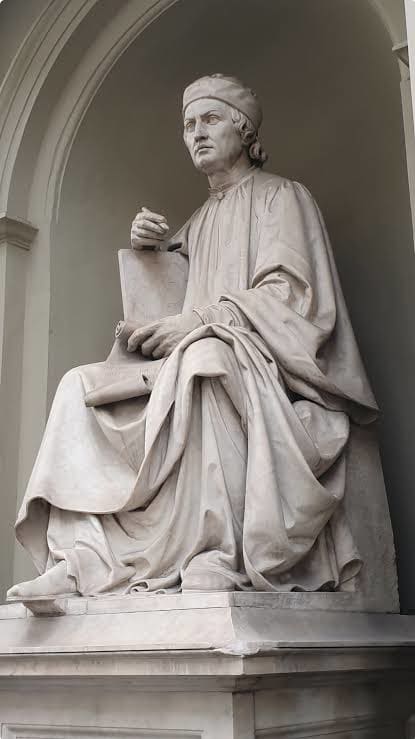
Throughout the 1300s, parts of Florence were completely demolished to make way for the majestic new cathedral. Two ancient churches were destroyed and a cemetery surrounding the Baptistery of San Giovanni was exhumed for the sake of the building site. Inhabitants who lived in the surrounding suburbs were displaced so that a piazza could be built in front of the church.
Despite razing much of the city, construction of the cathedral did not progress quickly. The Black Death devastated Medieval Europe and struck Florence particularly hard. In the spring of 1348, it decimated the city and as much as 80% of the population would die over the next year. By 1355, almost nothing of the cathedral existed bar the facade and the walls of the nave due to the disease that befell so many of the labourers.
As the city recovered, the pace of construction quickened and by 1366 the nave had been vaulted, with the east end of the church, including the dome, needing to be planned. While it is thought that di Cambio envisioned a dome for the church, following his death no evidence of his original design survived and at the time the nave was completed, the Wool Merchants were in charge of building and funding the cathedral. Given their area of expertise was wool, and not architecture, the merchants needed to appoint an architect-in-chief (capomaestro) who understood the craft and could help with the designs and oversee the construction.
In 1366, the capomaestro was Giovanni di Lapo Ghini and he began building a model for the dome but the merchants also asked Nero di Fioravanti, a master mason, and his group of masons and artists to come up with a design. This created something of a competition.
Giovanni di Lapo Ghini’s model was fairly traditional, with a dome supported by external buttresses typical of Gothic architecture. These flying buttresses were seen in churches in France but were rare in Italy where many architects saw them as ugly. Not only that, but France, Germany and Milan were enemies of Florence and it was a running theme that the Goths had created clumsy, awkward buildings not worth imitating. To this point, Neri di Fioravanti proposed an approach to structuring the dome that did not involved buttresses. Instead, using his experience of vaulting, he predicted the dome could be held up by a series of stone or wooden chains that would run around the circumference of the dome, similar to an iron hoop that goes around the planks of a barrel. These rings would be invisible and support the weight of the dome at any points of stress. The idea of a huge dome standing at the centre of Florence, seemingly unsupported by any external structure, excited the people of the city but some had questions about the stability of the design.

For months, these questions persisted and masons, architects and the Wool Merchant’s guild considered how exactly the dome could be built and the dimensions that would be needed for its success. In November 1367, a referendum was held and Florence’s citizens agreed that that Neri di Fioravanti’s design for the dome should be adopted. It was an ambitious move – the dome was modelled to have diameter of almost 144 feet (43 m) which would make it bigger than the Roman Pantheon, the world’s largest dome at the time.
Even though it was decided that Neri di Fioravanti’s design would be the basis of the dome, there was still the issue of physically building it. This was where the 1418 competition came in – it was hoped that an aspiring carpenter or mason may have the solution to constructing the dome and solving the challenges such an ambitious design presented (such as the fact that there was not enough wood in Tuscany to construct the dome).
Who was Filippo Brunelleschi?
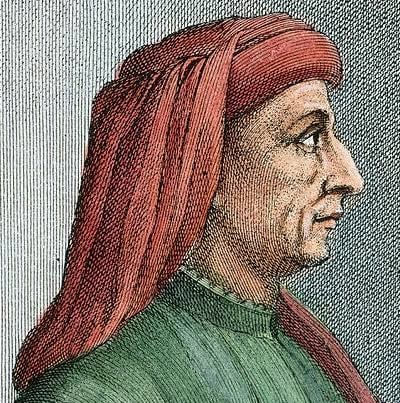
Filippo ‘Pippo’ Brunelleschi was the son of a respected and prosperous notary, Ser Brunellesco di Lippo Lappi, and Giuliana Spini. His father wanted him to follow in his footsteps and become a civil servant but the young Brunelleschi showed more creative promise than bureaucratic with a flair for solving complex mechanical problems. When he was fifteen, he was apprenticed as a goldsmith under Benincasa Lotti, learning the skills of mounting, engraving and embossing. At the time, goldsmithing was considered a prestigious profession and early on, Brunelleschi showed much promise as a goldsmith. He was adept at some of the more complex techniques involved in the profession, including engraving on silver and mounting gems. He also built a number of clocks, experimenting with the science of motion through looking at cogs, gears and weights.
The beginning of a rivalry
He became a master goldsmith at age 21, in 1398 and in 1401 he competed with six other participants in an illustrious competition to obtain the commission for the new set of bronze doors for the Baptistery of Florence. The participants had to depict the Sacrifice of Isaac on a bronze panel and were given one year to complete their trial panels. Casting in bronze was difficult and time-consuming work that involved modelling a figure in clay, carving it, baking it, pouring bronze into the hollowed sculpture and then chiselling, engraving, polishing and gilding it.
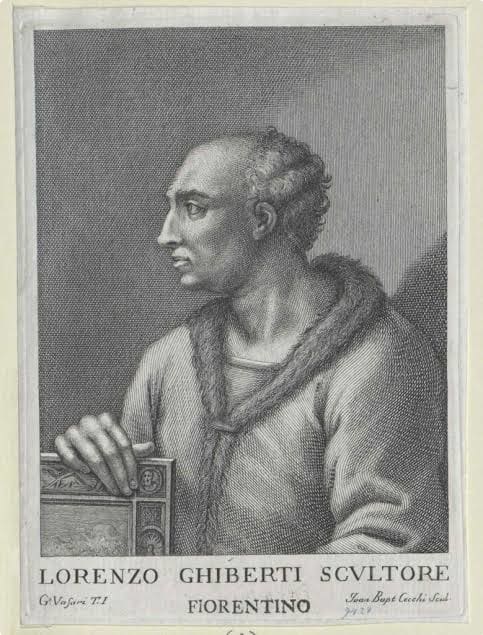
Once the entrants’ trial pieces were complete it became obvious that there were two contenders for the prize: Brunelleschi and Lorenzo Ghiberti. Unlike Brunelleschi, Ghiberti was of dubious paternity, rumoured to be the illegitimate son of the goldsmith Bartoluccio di Michele though officially the son of Cione di Ser Buonaccorso Ghiberti. He was younger than Brunelleschi and had no major works to his name. As well as this, the finalists had different approaches to the work. While Ghiberti sought the advice and opinions of fellow artists, sculptors jury members, Brunelleschi worked in isolation, hiding his work from others and paranoid that his designs might be stolen.
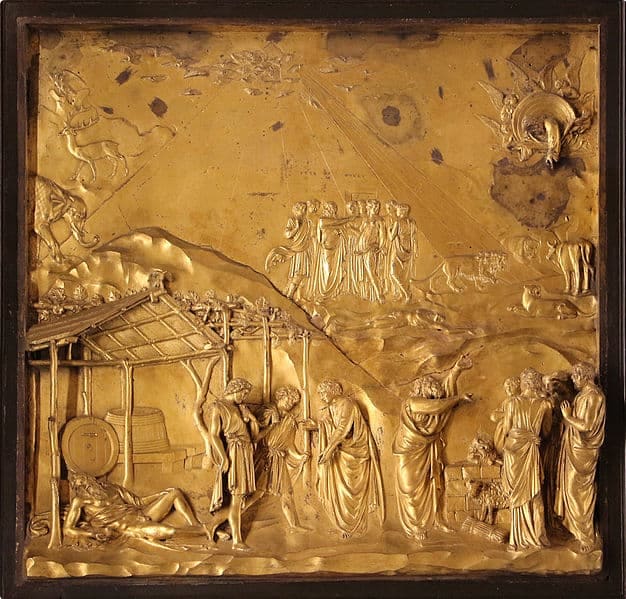
In the end, the thirty-four judges and the citizens of Florence struggled to decide between the two works. Brunelleschi presented a more dramatic panel while Ghiberti’s was considered more elegant. While it would be Ghiberti who would ultimately work on the bronze doors, there are conflicting accounts of which participant won the competition. Some say that, unable to decide and given the size of the project, the judges awarded the commission to both men. In this version, Brunelleschi, furious that he would not have complete control, withdrawing from the competition and leaving Florence altogether. Brunelleschi was notoriously hotheaded and cantankerous, so for many this seems like a plausible story. However, other accounts describe Ghiberti as winning and Brunelleschi leaving the city, unable to cope with the disappointment. It is said that losing the commission motivated Brunelleschi to focus on architecture rather than sculpture for the rest of his career.
Brunelleschi abandons Florence
For the next ten years, Brunelleschi lived in Rome, often accompanied by his friend, Donatello. He became fascinated by understanding the construction of the Pantheon and how its massive dome stayed up. He began studying ancient Roman structures and in doing so, rediscovered the principles of linear-perspective construction used by both the Greeks and Romans. Both the Greeks and the Romans could create images with convincing depth or figures that appeared three-dimensional. In the Middle Ages, however, this is not apparent and many medieval artworks appear flat with figures at the back of the scene depicted as the same size as those at the front. Brunelleschi observed that with a fixed single point of view, parallel lines appear to converge at a single point in the distance. He would apply a single vanishing point to a canvas and this would allow him the calculate the scale of objects in a painting in order to make them appear as realistic as possible. Brunelleschi’s rediscovery of linear perspective is indicative of the mathematical genius that would eventually undergird his success.
The Competition
When the competition was announced, famous architects from all over Europe travelled to Florence with hopes of winning the commission that would earn them eternal fame. Brunelleschi wanted the grand prize and, in some ways, his obsession with both mechanics and art made him the perfect candidate despite a lack of formal architectural training.
Brunelleschi and his egg demonstration
Brunelleschi knew that there was not sufficient timber in Tuscany for the task of building a structure to support the dome and concrete, the recipe for which had been lost since the fall of Rome, was also not an option. But being forward thinking and an engineer at heart, he devised a plan for a dome that could be built without requiring wood or earth or multiple arches or piers.
When he initially described his plan to the Consuls, they laughed at him, dismissing his proposal and declaring him a madman. Despite being known for his temper and impatience (the Consuls threw him out of their office at one point because he wouldn’t stop raving), Brunelleschi persevered and the Consuls became more and more intrigued. Brunelleschi had verbally described his solution, which was to build an inner hemispherical dome within an octagonal dome, with a second ovoid brick dome placed on top, but the judges wanted to see a model. Brunelleschi refused. Still intensely private when it came to his architectural plans, he feared someone would steal his idea or the judges would take the idea but give the commission to the someone else to build. He remained tight-lipped about his strategy but he knew that he would have to convince the judges somehow.
Rather than reveal his grand plans, Brunelleschi issued the judges a challenge and said the commission should be given to the man who could make an egg stand upright, because it would mean that man had the skills necessary for the job. The judges tried in vain to make the egg stand and failed but Brunelleschi took the egg, smashed the bottom of it on the table and stood the egg upright. The judges, bewildered, remarked they could have done the same thing themselves but Brunelleschi replied that they could have built the dome too, had they had his designs.
The judges were impressed and their curiosity was piqued. In 1420, two years after the competition was announced, Brunelleschi was declared the project’s capomaestro or superintendent but in what seemed like a cruel twist of fate for Brunelleschi, his arch-nemesis Ghiberti was named as a his co-superintendent. The construction of the dome began on 7 August 1420.
While our article ends here, the story of Florence’s world-famous dome does not. In Part 2 of this story we will examine the construction process, the challenges Brunelleschi faced and how he overcame them and further understand the building of the world’s largest masonry dome.
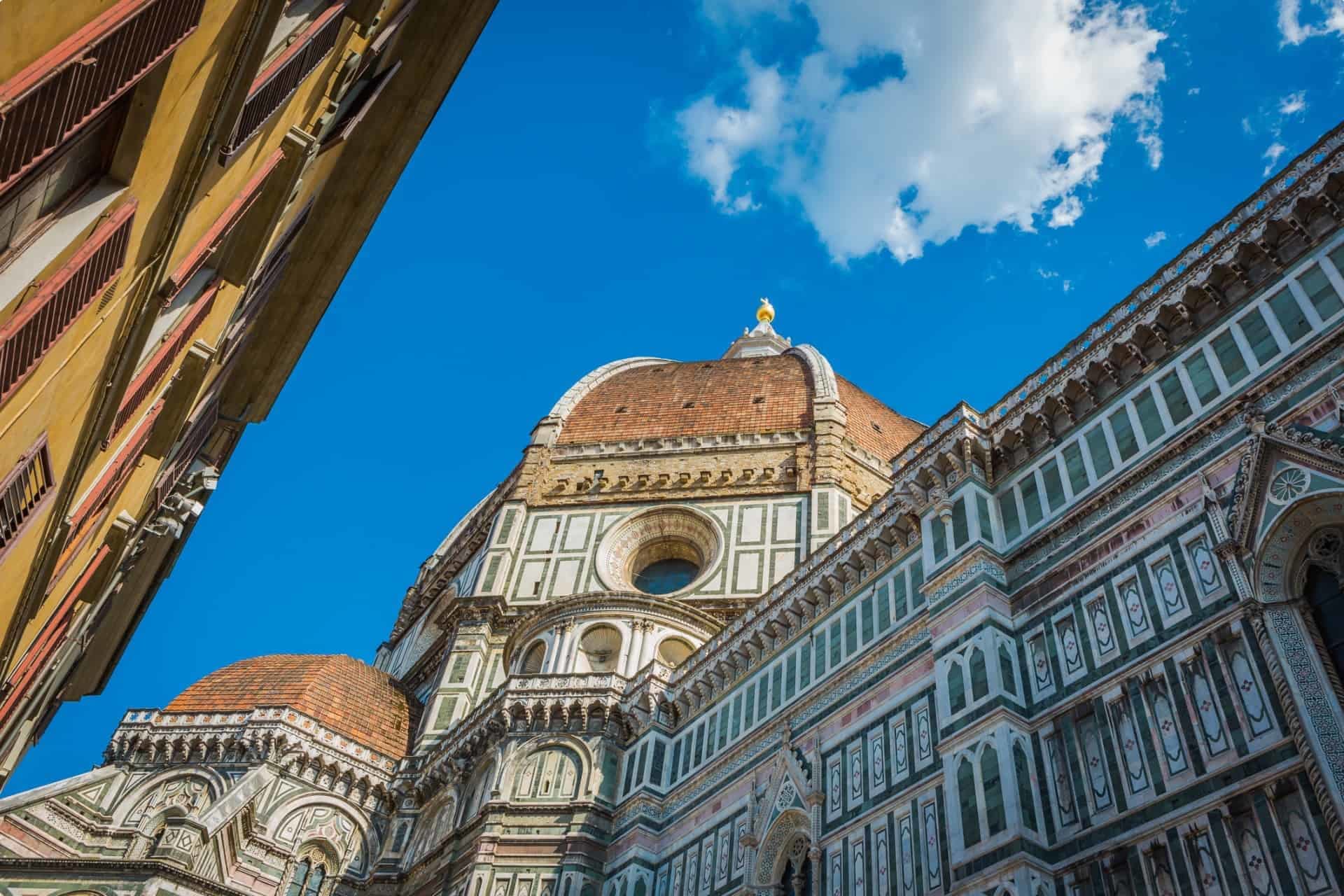
View of Florence’s Cathedral
Florence Today and Brunelleschi’s Work
Today, Brunelleschi’s Dome has become an iconic part of the Florence cityscape and is visited by millions of travellers every year. After admiring the outside of the Duomo and visiting the inside, you can climb up to the top of the dome and experience every aspect of this architectural treasure. The climb is not for the faint-hearted, with 463 steps and no life, but it is a truly unique experience and will give you a sense of what a feat building such a structure was.
Inside the Bargello Museum, you can see Brunelleschi’s bronze tile depicting the Sacrifice of Isaac, his entry for the Baptistery doors competition . He’s also responsible for Ospedale degli Innocenti, the Old Sacristy of San Lorenzo and the San Lorenzo Basilica. The Santo Spirito Basilica is also based off of Brunelleschi’s design, as is the Pazzi Chapel in Santa Croce. Visiting these sights will provide an insight into Brunelleschi’s genius but it most famous work will likely always remain the Dome.

Italy Tours for Seniors
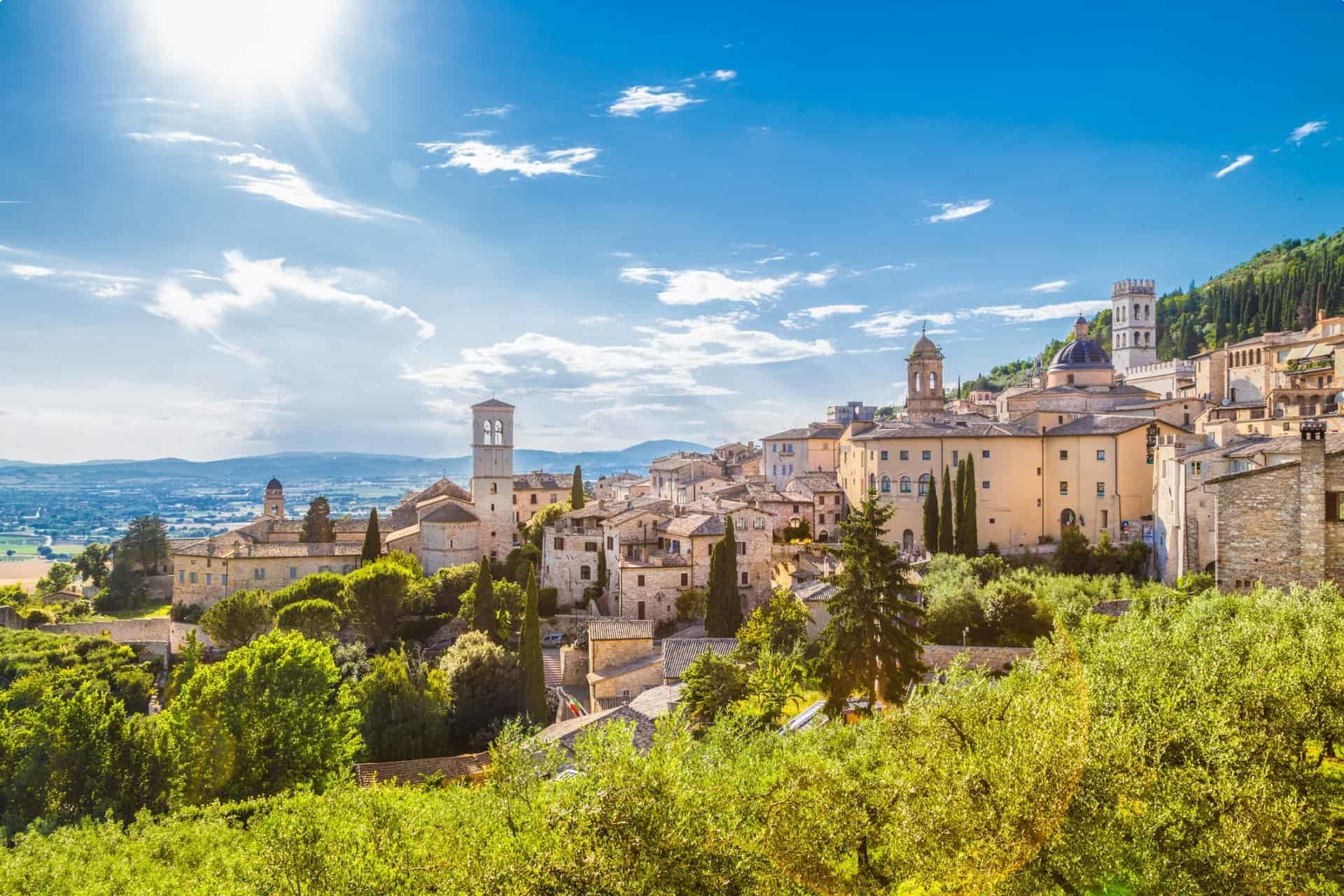
Related Tours

22 days
Mar, Sep, MayFlorence: Living in a Renaissance City
Visiting Italy
A small group tour with like minded people, couples or solo travellers, that is based in Florence. An authentic experience of living in this Renaissance city The daily itineraries draw on local guides to share their knowledge on this unique European tour. Trips to Vinci, Sienna and San Gimignano are included.
From A$14,375 AUD
View Tour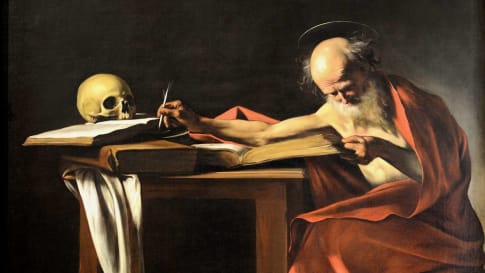
20 days
May, OctCaravaggio’s Journey | Small Group Tour in Italy
Visiting Italy, Malta
On this small group tour of Italy and Malta for mature and senior couples and solo travellers we trace the life of Caravaggio, exploring the artistic works he left behind and the tumultuous life he led. We follow him from his birthplace in Milan to Rome, Malta, Sicily and Naples. In each place he lived Caravaggio left behind a rich legacy of art for us to admire.
From A$15,125 AUD
View Tour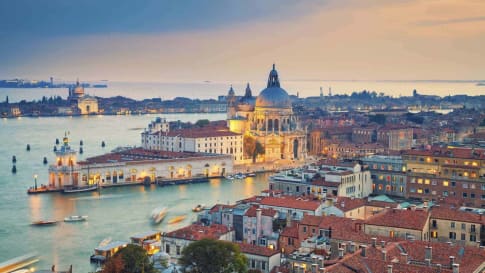
18 days
Aug, SepArt and History of Italy | Small Group Tour for seniors
Visiting Italy
Taken as a whole, Italian Civilization (which includes, of course, the splendid inheritance of Ancient Rome) is absolutely foundational to Western culture. Music, Painting, Sculpture, Architecture, Literature, Philosophy, Law and Politics all derive from Italy or were adapted and transformed through the medium of Italy.
From A$16,695 AUD
View Tour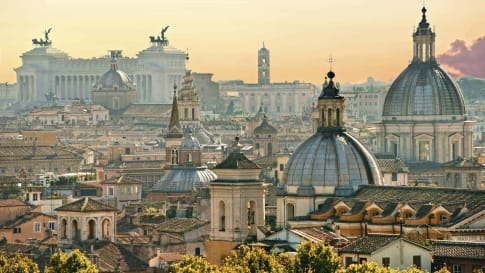
15 days
DecDiscover Rome | Cultural and History Small Group Tour for Seniors
Visiting Italy
Rome is arguably the most fascinating city in Italy, the capital city, once the centre of a vast, ancient empire and still today a cultural focus within Europe. Explore the city in-depth as part of a small group program spending 15 days exploring, just Rome and Roman History.
From A$9,235 AUD
View Tour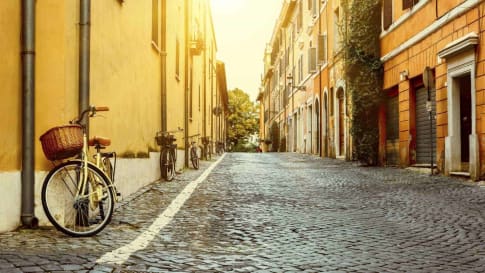
22 days
Sep, Apr, MarHeritage, Culture and History of Italy | Small Group Tours for Seniors
Visiting Italy
Rome, the world’s first superpower, lasted for almost a thousand years. In this small group tour for senior couples and solo travellers we thread our way through the Rome of the Emperors, then through the Italy of the Renaissance, Michelangelo, the Medici, and the Borgia. In the south, we visit the cosmopolitan city of Naples as well as Pompeii and the island retreat of Capri.
From A$13,695 AUD
View Tour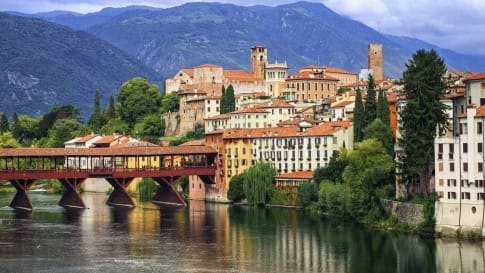
22 days
Oct, AprTour of Northern Italy's Lakes and Alps
Visiting Italy
A European tour to the stunning Lakes Region of Italy. Your travel experience begins in Milan, daily itineraries include two of the region’s lakes - Garda and Maggiore, plus the Roman villa Desenzona and a day in Cinque Terre. Local guides share experience and knowledge with you on this escorted small group tour for couples and solo travelers.
From A$14,895 AUD
View Tour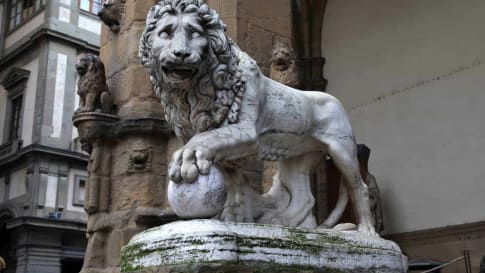
21 days
Apr, Aug, MayRenaissance Italy Tour: Story of Five Families
Visiting Italy
Explore Renaissance Italy on this small group tour though an examination of five significant city states. Florence, Urbino, Ferrara, Mantua and Milan were all dominated by families determined to increase the status of their city through art and architecture. Spend time coming to know the men and women who helped create the cities, as well as the magnificent legacy they left behind.
From A$14,295 AUD
View Tour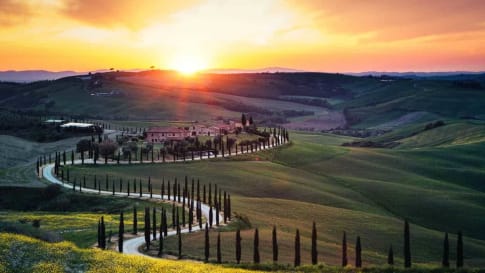
17 days
Sep, AugVia di Francesco Walking Tour | Small Group Walking Tours Italy
Visiting Italy
Experience with like minded people a small group journey walking Via di Francesco (or the Way of St. Francis) in Italy. One of a few European tour companies who offer a tour leader and local guides for senior couples and single travellers on this journey between the key destinations on this walk.
From A$12,050 AUD
View Tour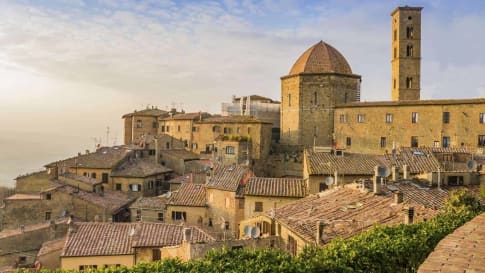
26 days
Aug, SepVillages of Italy | small group tours Italy
Visiting Italy
Explore Italy in a small group tour. Italy is the most Mediterranean of nations and as mature and aged as many of its red wines. In terms of being a nation, it is even younger than New Zealand. This is often hard to believe, bearing in mind that Italy gave rise to Europe’s first global empire, which endured for approximately 2,000 years, the Romans. The new constantly brushes with the old and in doing so generates sparks that makes any sojourn in Italy a deeply textured experience.
From A$16,775 AUD
View Tour